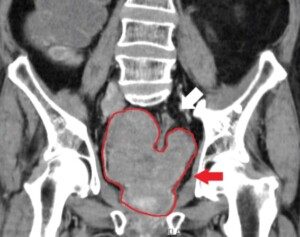Physical fitness makes you live longer but not only because it’s good for your health.
There’s another very intriguing reason that fit people live longer.
Staying physically fit has long been associated with a lower risk of dying early from diseases such as cancer or heart conditions.
However, research from Uppsala University suggests this connection may not be as straightforward as once thought.
According to a study published in the European Journal of Preventive Cardiology (2025), young people with higher fitness levels may also be less likely to die from random accidents — events that aren’t directly linked to physical health.
This unexpected result calls into question how previous studies have measured and interpreted the benefits of early-life fitness.
Fitness and Longevity: Not As Straightforward As You Think
The research team, led by epidemiologist Marcel Ballin, focused on a large sample of over 1.1 million Swedish men who were conscripted into military service between 1972 and 1995.
On average, they were 18 when their cardiorespiratory fitness was assessed.
Researchers sorted them into five groups based on fitness levels and tracked their health outcomes until they reached their 60s or died.
The team analyzed how fitness in late adolescence related to risk of death from cardiovascular disease, cancer and all causes.
Even after adjusting for factors such as BMI, age and parental income and education, the findings showed that the men with the highest fitness levels had a significantly lower risk of early death.
- 58% less likely to die from cardiovascular disease
- 31% less likely to die from cancer
- 53% less likely to die from any cause compared with those in the lowest fitness group
Fatal Random Accidents and Lack of Fitness
Freepik/rawpixel.com
Researchers decided to examine whether those same fitness levels were also associated with causes of death that don’t seem directly related to health.
Examples would be motor vehicle accidents, drownings and homicide.
These events were chosen because fitness shouldn’t logically or seemingly play a role in how or whether someone dies from such incidents.
“Negative control outcome analysis” is a way to test how accurate your initial results are by comparing them to an outcome that should have no relationship to the item that you’re studying.
In other words, the death rate in fit exercising people from workplace accidents shouldn’t be different from the death rate in out of shape people from workplace accidents.
If you find an unexpected link, it could mean that your original comparison groups differ in ways that weren’t fully measured — what researchers refer to as “confounding.”
In this research, men with the highest fitness levels also had a 53% lower risk of dying in random accidents — nearly the same drop as with all-cause mortality.
Since there’s no obvious biological reason that being fitter at 18 would greatly reduce someone’s risk of dying in an accident decades later, this raised questions about whether fitness just in itself was the main reason for the lower death rates seen in earlier studies.
Sibling Comparison Design
To further test this idea, the team also used sibling comparison design.
This approach compares brothers with different levels of fitness, allowing researchers to account for shared genetics, household environment and upbringing.
Even with this method, the pattern held: Fitter brothers were less likely to die prematurely, including from accidents.
The fact that the association with accidental deaths remained strong — even between siblings —suggests that other, less obvious factors must be influencing both fitness levels and the risk of dying early.
Some Theories to Explain These Findings
Does it not stand to reason that a fitness-conscious person would be more cautious behind the wheel of a car?
I myself have often thought what a tragedy, or irony, it’d be if, after a kickass workout at the gym, that careless driving on the way home could then end one’s life in an instant.
The paper proposes that those with deliberately better fitness might also be more careful (e.g., when climbing a ladder, riding a bike through busy city streets, swimming in the ocean) or have other traits that affect their long-term outcomes.
One such trait might be that of always wearing a seatbelt or helmet even for short distances.
Such measures would logically come with the territory of caring enough about one’s body to keep it in top condition.
Another possibility, which the study didn’t explore, is that a physically fit, sturdy body is more likely to survive a fall off a roof, a motorcycle crash or an exhausting effort at rescuing a drowning child from a rip tide.
Imagine an overweight, never-exercising smoker battling the current to save someone from drowning; you can easily imagine the heart attack.
A thin person, too, can be very de-conditioned due to a sedentary lifestyle.
Who’s more likely to survive getting thrown from a car: the “90 pound weakling” or the man who regularly squats 315, deadlifts 405 and benches 285?
Analysis and speculation aside, there’s just no denying it: Being physically fit puts the odds very much in your favor for living a long life. Now get moving!
 Lorra Garrick is a former personal trainer certified by the American Council on Exercise. At Bally Total Fitness, where she was also a group fitness instructor, she trained clients of all ages and abilities for fat loss and maintaining it, muscle and strength building, fitness, and improved cardiovascular and overall health.
Lorra Garrick is a former personal trainer certified by the American Council on Exercise. At Bally Total Fitness, where she was also a group fitness instructor, she trained clients of all ages and abilities for fat loss and maintaining it, muscle and strength building, fitness, and improved cardiovascular and overall health.
.










































